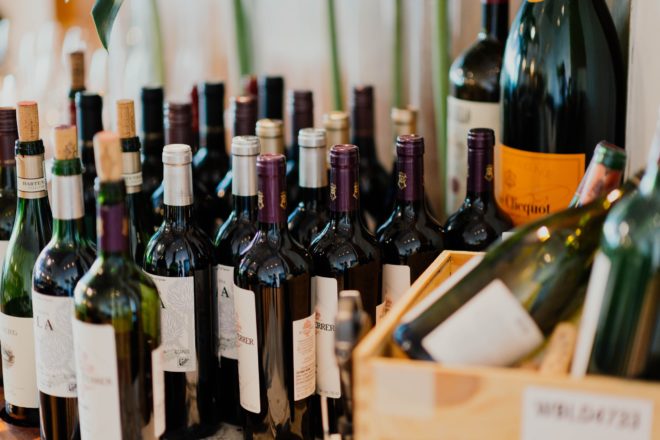Alcohol Increases Food Takeout and Delivery Orders

U.S. alcohol sales rallied 22% in the last week of March, compared to the same period last year. That contrasts with fast food restaurants’ same-store sales declining 34% and a devastating 83% loss at casual-dining restaurants. To make up some of the difference, restaurants are looking to tap into alcohol sales.
Grocers and state liquor stores have captured most of the growth from alcohol sales during the past month. Bars and restaurants have not. Yet innovative restaurant owners are now looking to add alcohol to their takeout and delivery orders to help offset some of their losses. Fortunately, government officials are doing their best to help.
Alcohol Deliveries Critical for Restaurants During Shutdown
Many government officials recognize the plight of restaurants during COVID-19 and are making concessions. In Alaska for example, a new alcohol delivery law will help struggling restaurants increase sales by this weekend. Alaska’s alcohol board unanimously approved new rules allowing restaurants to home-deliver beer and wine alongside food deliveries within the state. The rules will become effective when Governor Kevin Meyer signs it; an attorney from the Alaska Department of Law said that could take place as early as Wednesday evening.
In Massachusetts, Bill H.4598 which was signed into law on March 2, allows restaurants to sell sealed wine and malt beverages with food delivery orders. Similar laws are in force in other states including Texas, New Hampshire, Maryland, Washington D.C., Illinois and California.
New alcohol delivery laws are often temporary, and details vary widely from state to state. New York couriers must personally maintain a copy of the liquor licenses for all establishments. Michigan has enacted a buyback program to restaurants for their excess spirits inventory, providing them 100% of their purchase price. In Texas, restaurants can only deliver manufacturer-sealed containers of alcohol, meaning they cannot sell handcrafted cocktails. Many other states have similar restrictions on cocktails, and very few allow the purchase of alcohol without accompanying food.
All states require couriers to verify the age of alcohol customers with a government-issued I.D. verification. Most laws prohibit restaurants from selling handcrafted cocktails drinks for delivery and takeout; the alcohol must remain in manufacturer-sealed containers. Virginia is one exception: Governor Ralph Northam announced that restaurants and distilleries can sell mixed beverages with takeout or delivery orders in Virginia as of April 10.
Despite an unprecedented sales decline due to the COVID-19 pandemic and associated lockdowns, these new alcohol laws are helping to soften the blow. Remarkably, some businesses have been able to grow during the pandemic by pivoting to new offerings, such as grocery mini-marts, meal kits, alcohol, and other high-tech solutions like online food delivery apps.
CARES Act Stimulus Checks Are Arriving
According to industry trade publication Restaurant Business, some restaurants have seen sales increase by over 30% just during the past few days since CARES Act stimulus checks have been distributed by the U.S. Treasury. The growth compared to previous weeks coincides with the arrival of COVID-19 stimulus checks. For many Americans, the $1,200 checks are the first cash injection they have seen in weeks.
COVID-19 has left record numbers of Americans out of work, which affects their discretionary budgets upon which restaurants rely. According to Fortune, the real unemployment rate is running close to 18%, with 22 million Americans having lost their jobs due to the coronavirus. The arrival of stimulus money has provided out-of-work Americans a cash infusion, which many are spending on discretionary purchases like food and alcohol deliveries. It has led to a temporary sales boost for restaurants, which have been struggling under the nation-wide lockdown.
Times are changing, and any restaurant with a liquor license should explore its opportunities related to alcohol takeout and delivery. Faced with a near-complete shutdown of dining areas, restaurants need to adapt to a new reality. Takeout and delivery innovations are areas requiring the attention of every restaurant owner today. While delivery app fees have proven to be a cost that not all restaurants can bear, those fees can be softened by adding new items like alcohol and grocery staples. With a little work and ingenuity, restaurant owners will prove that they can adapt to this crisis.
Photo by chuttersnap on Unsplash

Leave a Reply